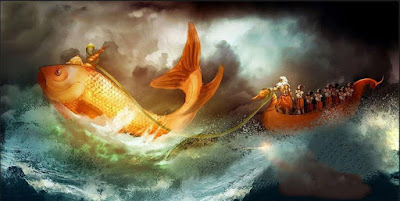Lord Caitanya
Mahaprabhu, who was also known as Visvambhara (“Lord of the universe”),
appeared in Bengal, India, 489 years ago and taught love of Krsna. The Vedic
scriptures, such as the Vedas, Upanisads, Vedanta-sutra and
especiallyBhagavad-gita and Srimad-Bhagavatam, all
reveal Krsna to be the Supreme Truth and the dearmost friend of every living
being. Lord Krsna says in Bhagavad-gita “Give up all other
forms of religion and surrender to Me. I shall then protect you.” Lord
Caitanya, therefore, urged everyone He met, “Surrender to Krsna.
His holy name
is the only shelter.”
Because thousands of
years had passed since Krsna’s appearance on earth and because people had not
fully understood Krsna from Bhagavad-gita, Lord Caitanya, as
Krsna’s dearmost servant, showed everyone exactly how to render loving service
to Krsna, just according to Krsna’s own words as revealed in Vedic literature.
These Vedic writings were compiled 5,000 years ago, but when Lord Caitanya came
He created a great revival of love for Krsna. Most importantly, Lord Caitanya
delivered the chanting of Krsna’s holy names: Hare Krsna, Hare Krsna, Krsna
Krsna, Hare Hare/ Hare Rama, Hare Rama, Rama Rama, Hare Hare.
Sri Krsna Caitanya, as
He was also called, did not invent the chanting of Hare Krsna; He took it
directly from the Vedic scriptures. The Brhan-naradiya Purana says: harer
nama harer nama harer nama eva kevalam/ kalau nasty eva nasty eva nasty eva
gatir anyatha: “Chant the holy name, chant the holy name, chant the
holy name! In the Kali-yuga [the Age of Quarrel and Hypocrisy] there is no
other way, no other way, no other way.” The Kalisantarana
Upanisad also says that these sixteen words in thirty-two syllables
Hare Krsna, Hare Krsna, Krsna Krsna, Hare Hare/ Hare Rama, Hare




























